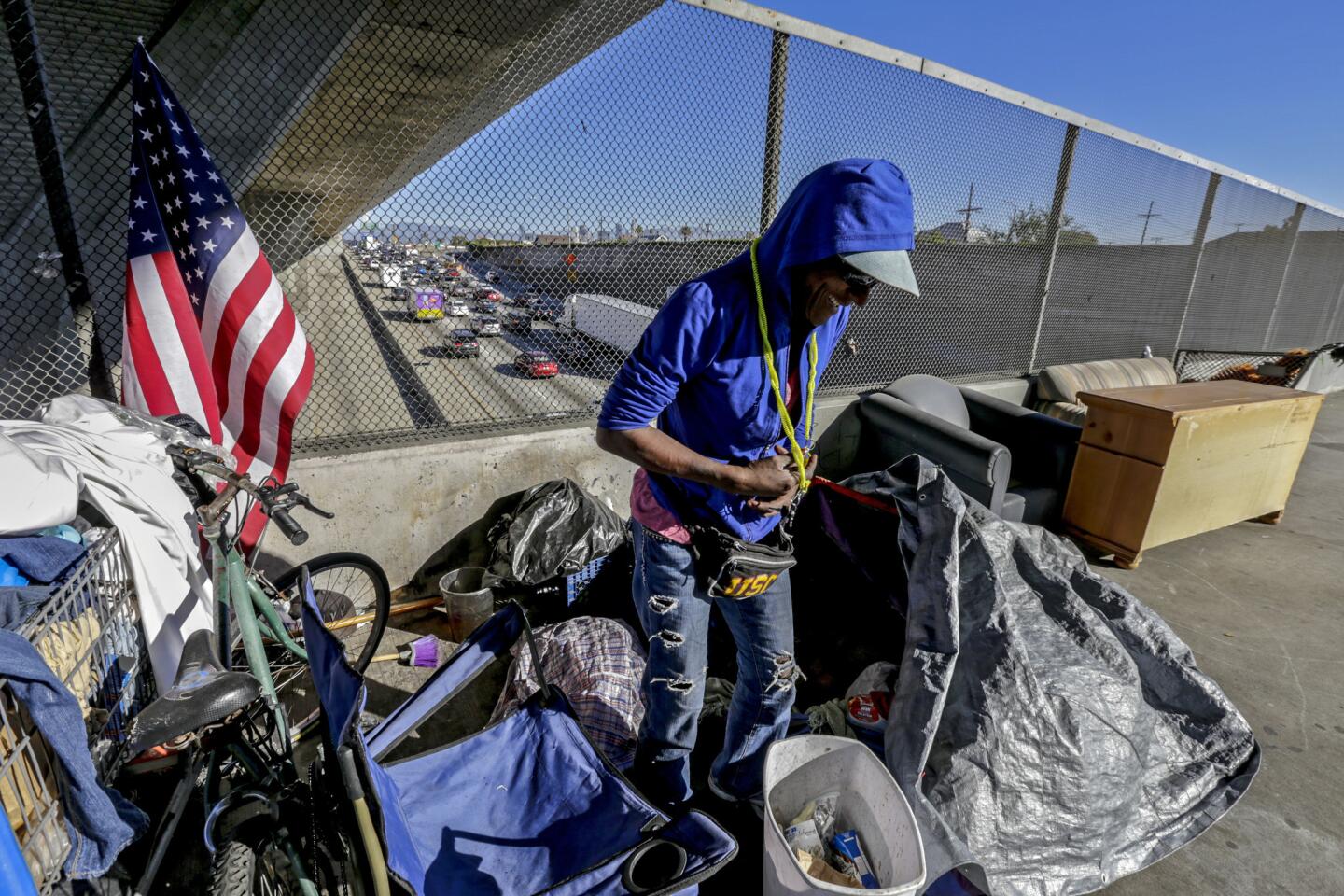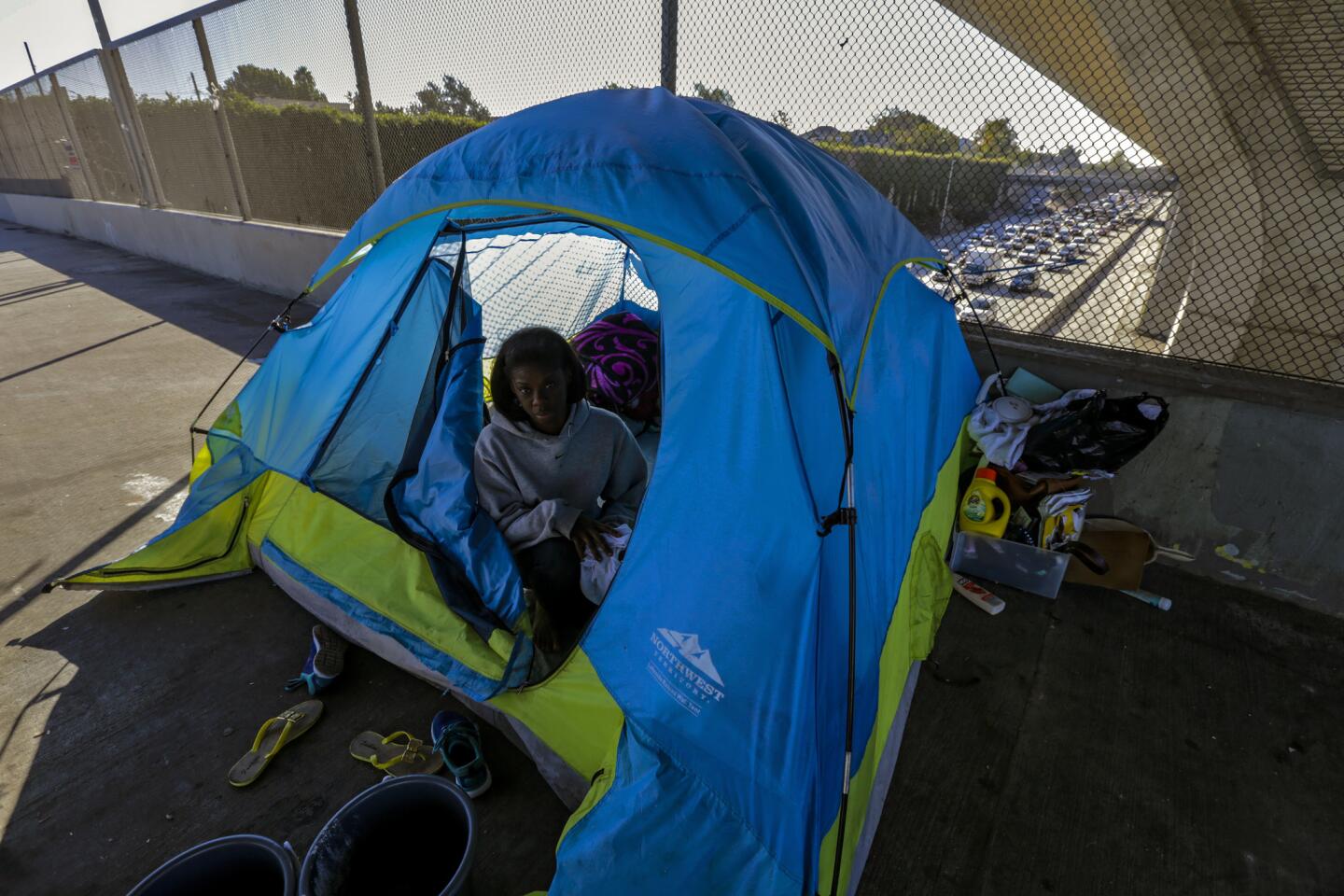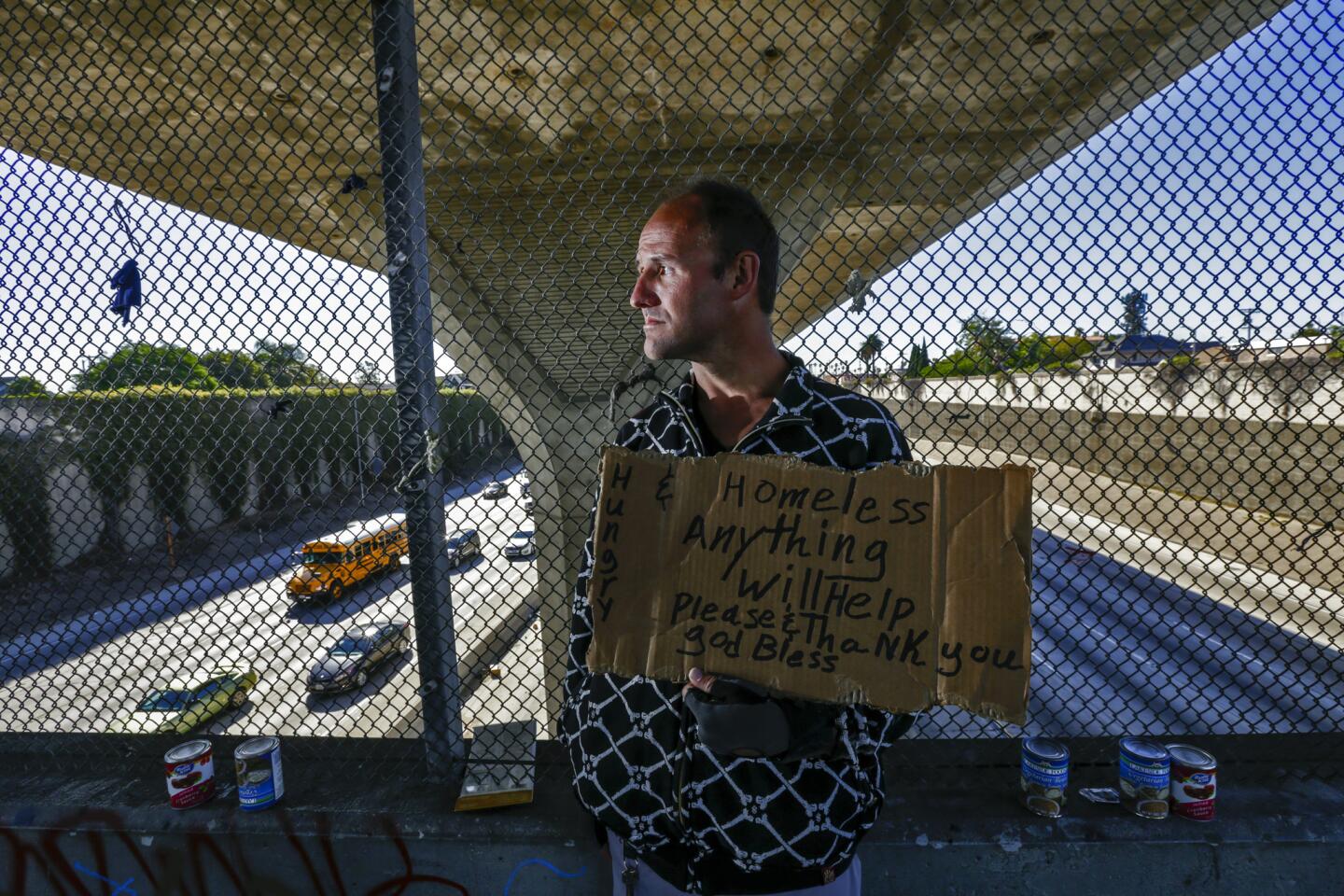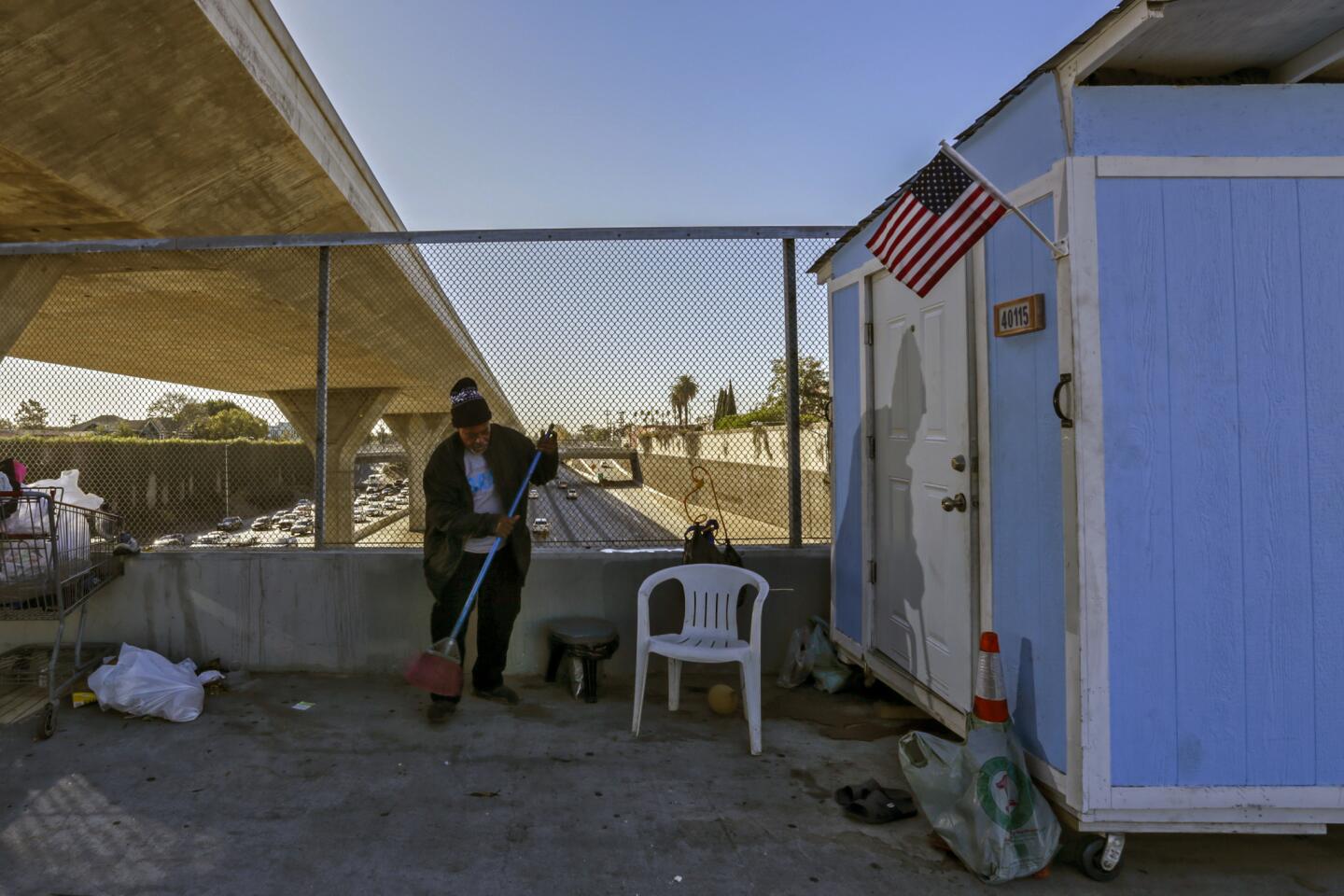L.A. council declares shelter crisis in effort to help the homeless
With an estimated 26,000 people calling Los Angeles sidewalks, cars and storm drains home, city officials on Tuesday approved an expanded campaign to help the homeless this winter by opening public buildings as temporary shelters and allowing people to sleep inside vehicles in designated lots.
The move comes as Los Angeles’ homeless population has multiplied across the region and Southern California is expected to be hit by severe rainstorms and possible flooding from El Niño, which could put unsheltered residents at increased risk.
The City Council also approved what members said were changes to soften a controversial law allowing authorities to seize individuals’ property stored on sidewalks and in alleys, though opponents said the new language continues to criminalize homelessness.
It also moved to create a special fund to tackle the problem, examine ways to expand voluntary storage facilities and push for creation of a homelessness czar.
But the council did not declare a state of emergency, as members had pledged to in September, and it acknowledged that it could be weeks or months before people living in the streets see the benefits of Tuesday’s actions.
City Councilman Mitch Englander, who represents the West Valley, warned that critics would see the votes as “a Band-Aid solution to a major problem where every organ in the body is failing.”
“They will say that, and they’re right,” he added. “We have to take measures to move forward, and these aren’t huge measures.”
For many years the council has declared a “shelter crisis” from Nov. 1 to March 31 so homeless people have a place to stay during the cold winter months. On Tuesday, the council voted 14 to 0 to ask the city attorney to draft an ordinance extending the crisis further into the spring, without setting an end date. The measure will also allow council members to identify additional buildings in their districts where homeless people could sleep.
For the thousands of homeless individuals who live in vehicles, the city will explore allowing overnight parking in public and private lots. Santa Barbara operates a similar program, which limits the number of RVs in any one lot and provides bathroom facilities for the temporary residents.
It’s unlikely that the overnight parking program will be implemented before the end of the year, Westside Councilman Mike Bonin said.
Officials said they hope that a state of emergency, which is more often associated with natural disasters such as floods and wildfires, could make the city eligible for additional state and federal funds. But only Mayor Eric Garcetti has the authority to make such a declaration.
“I think we absolutely need it,” said Councilman Jose Huizar, recalling that when Garcetti joined seven council members two months ago to back an emergency declaration, Huizar envisioned setting up a triage center on skid row.
“I don’t understand how any emergency response unfolds in slow motion,” said Gary Blasi, a retired UCLA law professor and homelessness researcher now working with Public Counsel’s Opportunity Under Law program.
City officials declared homelessness emergencies twice in the 1980s. In June 1987, an emergency was declared in order to establish a temporary campground downtown for the homeless. Six months later, cold weather prompted a second local emergency, according to a report from the city attorney’s office.
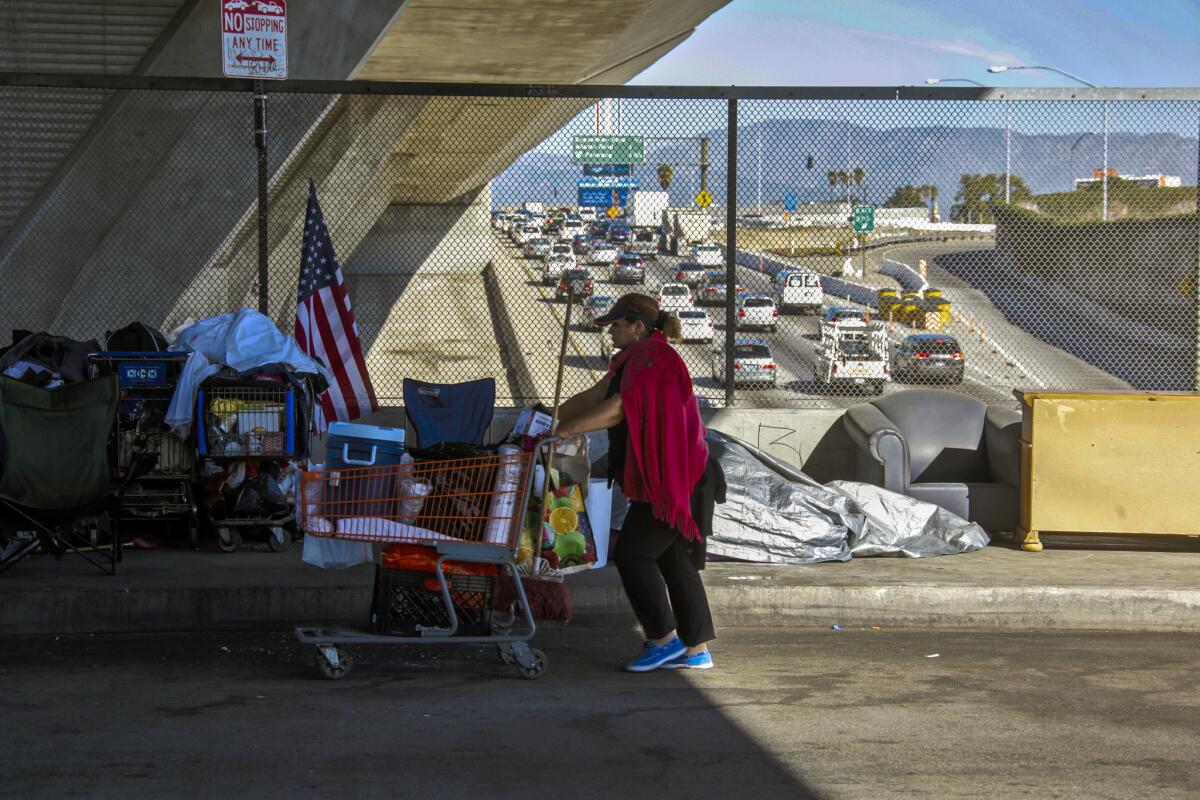
With an estimated 26,000 people calling Los Angeles sidewalks, cars and storm drains home, city officials on Tuesday approved an expanded campaign to help the homeless this winter by opening public buildings as temporary shelters and allowing people to sleep inside vehicles in designated lots.
A lack of affordable housing prompted San Diego to declare a local emergency in 2002. The emergency declaration has been renewed every two weeks since then, but “it is unclear what benefits if any San Diego received from declaring the local emergency,” the report said.
The council is expected to take up homelessness again in January, when members receive a strategic plan from the homelessness committee. That plan is being developed in conjunction with Los Angeles County.
SIGN UP for the free California Inc. business newsletter >>
“The situation citywide is so grave, even if they lose a little bit of confidence at some point, their feet will be held to the fire by all the communities experiencing what we’ve been experiencing for a while,” said Carol Schatz, president and chief executive officer of the Central City Assn. of Los Angeles.
Council members heard an hour of passionate testimony from residents and activists before voting.
“It’s not something that we haven’t been dealing with for 40 or 50 or 60 years, except that it’s worse,” said Judith Hirshberg. “In my nice neighborhood, we have people who have no place to sleep, come into vacant homes and set fires. It’s not a good idea.”
Speakers complained of having encampments pop up near their homes, leading to fears of robberies, drug abuse and prostitution.
“Every time we get the alleyway cleaned up, they come right back. It’s like cleaning the house for them,” said Carol Crawford.
Over the summer, the council passed a law allowing authorities to seize homeless people’s possessions if they were being stored in public spaces.
On Tuesday, the council voted to ask the city attorney to limit the actions that would be considered unlawful under the controversial ordinance.
Homeless people would have to comply with a lawful order from any city official to take down their tents during the day, and store their belongings in city storage facilities if they are available within a two-mile radius. The city attorney’s spokesman said violators could be ticketed, fined or arrested on misdemeanor charges.
The council also asked city staff to report back on expanding its voluntary storage capacity for homeless people, which is currently limited to skid row.
“City Council moved forward with the amendments that I requested, ensuring that our streets are clean and safe without criminalizing the most vulnerable,” Garcetti said in a statement. Earlier, he allowed the measure to become law but asked that the city’s authorities not enforce the law until it could be reworked.
However, even with the changes put forward Tuesday, the law could face challenges.
“I can’t imagine what authority allows seizure of somebody’s property for failure to follow the order of a public official,” Blasi said. “There’s still a Constitution that comes between a bureaucrat or representative of the government and the seizure of property.”
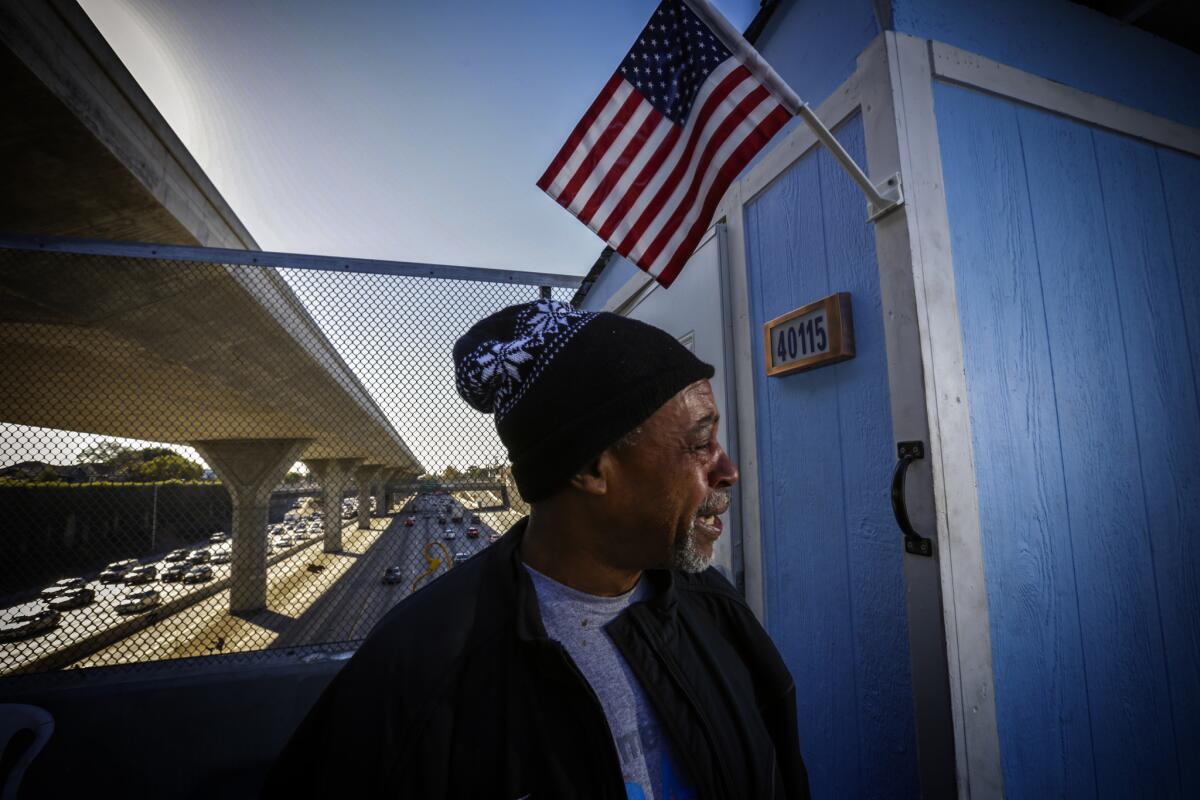
Marvin Burrus, 58, standing next his portable shelter, weeps recalling reasons for being homeless. His portable shelter is parked on 42nd Street bridge above the 110 Freeway in Los Angles.
The council also voted to create a new fund to hold the $100 million city leaders want to appropriate for homeless programs, though it remains unresolved where that money will come from.
“If this sounds complex and slow, it has been sort of a maddening and frustrating process for all of us,” Bonin said. “We all want to go very, very fast. What we’re trying to do is find ways to go as fast as possible but we keep running into charter requirements, [environmental] requirements and some of our own self-imposed handcuffs.”
In October, the county Board of Supervisors declared a shelter crisis in anticipation of the storms that will come with El Niño. There are concerns that encampments in storm drains and river beds could be flooded when the powerful storm system hits Southern California. Supervisors also increased the number of winter shelter beds from 600 to 861.
Officials did not provide an estimate Tuesday of how many people might be sheltered under the city’s expanded program.
Twitter: @thecitymaven and @geholland
ALSO
On the Streets: An ongoing video series about homelessness in Southern California
Sandy Banks: Compassion, confusion and resentment in a city where the homeless are everywhere
Steve Lopez: A punch in Pauley Perrette’s face may be the kick in the pants we need on homelessness
More to Read
Sign up for Essential California
The most important California stories and recommendations in your inbox every morning.
You may occasionally receive promotional content from the Los Angeles Times.
